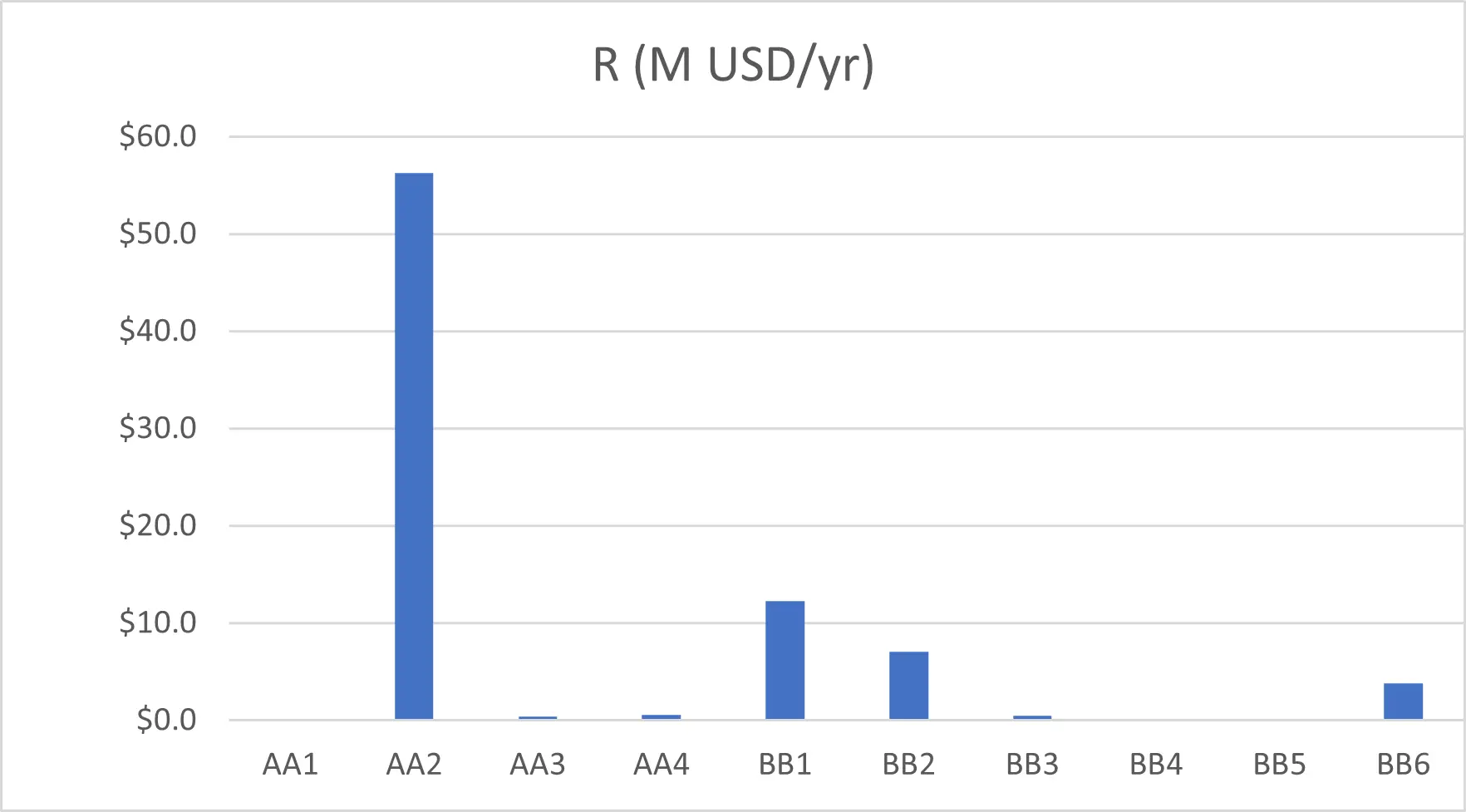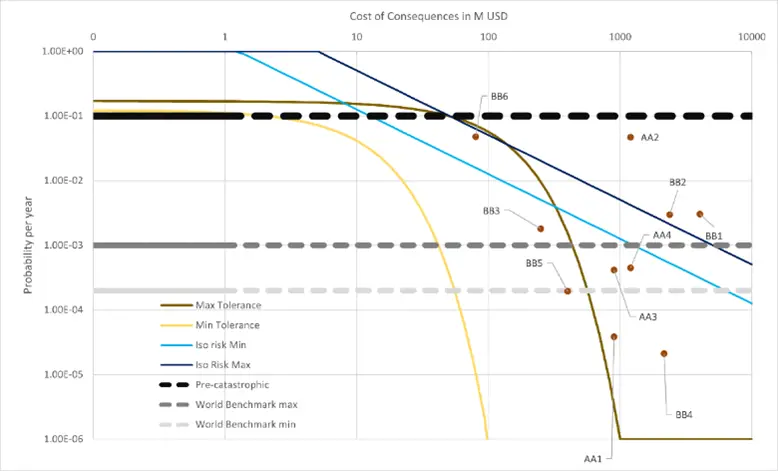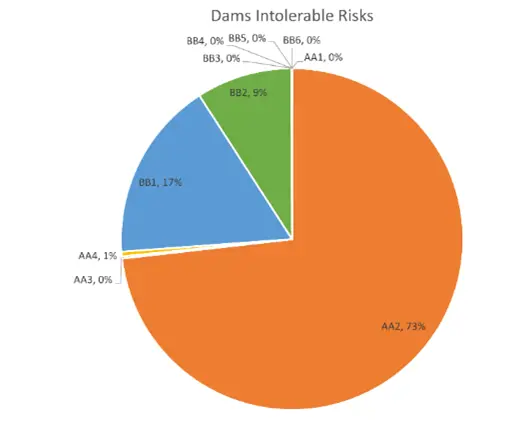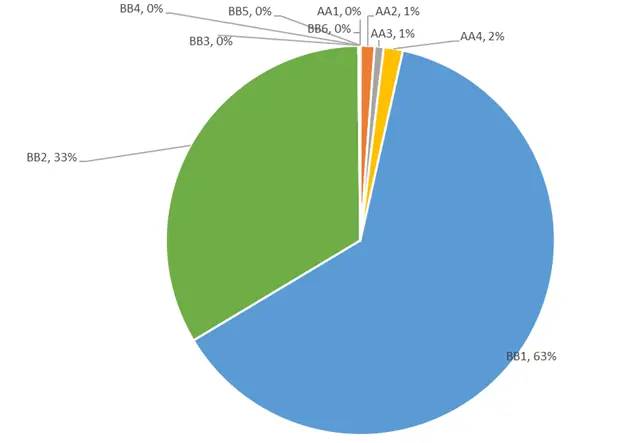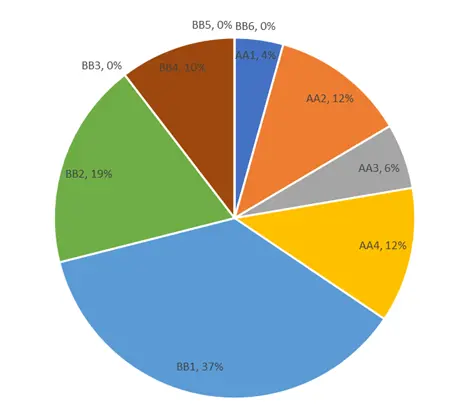Tactical and strategic planning for dam portfolio using ORE2_Tailings™ is the third of a series of blogposts explaining how to use ORE2_Tailings results. Other posts in the series are:
- Dam portfolio ORE2_Tailings support for decision-makers
- ORE2_Tailings supports ICMM Global Industry Standard on Tailings Management conformance
We use the same figures we have developed in those prior discussions.
Summary of the Portfolio ORE2_Tailings Results
With Respect to Probability of Failure
The portfolio of 10 dams has two “bad apple” dams (AA2, BB6), three dams that are above worldwide benchmark (BB1, BB2, BB3) and five dams that are straddling or below the worldwide benchmark (AA1, AA3, AA4, BB4, BB5).
The first two groups display great potential for mitigation provided mitigation of ancillary water management issues.
With Respect to Risk
By introducing the multi-dimensional consequences of failure, we evaluated the risks and got the following graph for the considered portfolio:
The graph tells us the highest risks are generated by dam AA2, then BB1, BB2 and BB6, and the rest are negligible. Interestingly, the “bad apple” BB6, which has a similar probability of failure as AA2, has only the fourth-ranking risk due to its low consequences. One would be tempted to split mitigative funds proportionally to the dams’ risks, but is this the best planning? Read further for the answer.
With Respect to Tolerance
We then reported (graph below) the same dams on an annualized probability of failure−consequence (pf-C) graph with operational and corporate tolerances and the worldwide benchmarks.
In this example, no dam is below the operation’s tolerance (yellow curve). Hence, all the risks are corporate (brown curve). We also noticed that dams BB3, BB5 and BB6 are corporately tolerable. All the other dams are corporately intolerable. The prioritization of the risk from top to bottom misleads its users on dam BB6 quite badly, as it actually generates a tolerable risk.
The figure below which shows that dams AA2, BB1 and BB2 have the largest corporately intolerable risks. Thus, we stated they should receive mitigative budget proportionate to their intolerable risk. The conclusion was that the money allotted by the top-down approach to BB6 and the “minor risk dams” would be misallocated. As a result of the misallocation, the AA2, BB1 and BB2 dams would be left overexposed.
In many cases, we have seen the “misleading results” are even more significant, and the hands-on “fix-it-all” approach leads to misguided planning.
The Next Step in ORE2_Tailings Results Interpretation
Definition of Tactical and Strategic Risk Dams and Their Mitigation Principles
As we can see in our glossary, tactical and strategic risks obey to rigorous definition. An intolerable risk is a tactical risk if one can sustainably and economically mitigate it by reducing its probability of failure. Mitigation examples could be reinforcement of the dam itself, enhancements of the ancillary water management, and reduction of liquefaction potential.
A strategic risk requires a system change in order to shift a risk to tolerable. That would mean, for example, reducing consequences by reducing volume/height, moving people away from the flood zone, etc.
Application to the Considered Portfolio
Now, the interest of this example is that one might first consider AA2 and AA4 to be tactical risks. Indeed, if we include all possible mitigation, those risks could slide down toward tolerance at credibility threshold (1.00E-06). The question then is: can the probability of failure of a dam be mitigated in a sustainable and economic way to such a low level? However, one could start, for instance, by bettering the ancillary water management system and reducing the probability of failure of AA2, hence reducing its contribution to intolerable risks.
BB1 and BB2 on the other hand are clearly and will remain strategic risks. Indeed, no matter how much you reduce the probability of failure, they remain “outside of tolerance” down to credibility threshold.
The pie chart below displays the intolerable risk inventory with AA2 partially mitigated (see above). We can see that BB1 and BB2 would then become the new focus.
Dam Intolerable Risks with only AA2 partially mitigated.
Furthermore, if we look at a what-if scenario with every structure partially mitigated in terms of water management, we see significant changes in the portfolio’s intolerable risk landscape.
Dam Intolerable Risks with every structure partially mitigated.
In other words, the overall risk landscape of the dam portfolio changes as one decides dam mitigation implementations. Thus, the outmost care is necessary to ensure rational, efficient, sustainable and balanced approaches.
Closing Remarks on Tactical and Strategic Planning for Dam Portfolio Using ORE2_Tailings
ORE2_Tailings simulates alternative mitigation planning including tactical and strategic options. The goal is to find good balance and efficiency.
Thus, it becomes possible to justify risk management actions and to allocate mitigative capital expenditures in the best possible way considering the various constraints, including of course the true nature of consequences and all their dimensions, sustainability of the implementation, costs of the mitigation and optimization and ethics of the expected results.
These are the reasons why only a dynamic and integrated approach can bring the proper answers to managers of dam portfolios. Exploring what-if scenarios and the measurement of the effectiveness of the mitigations and related investments is paramount.


